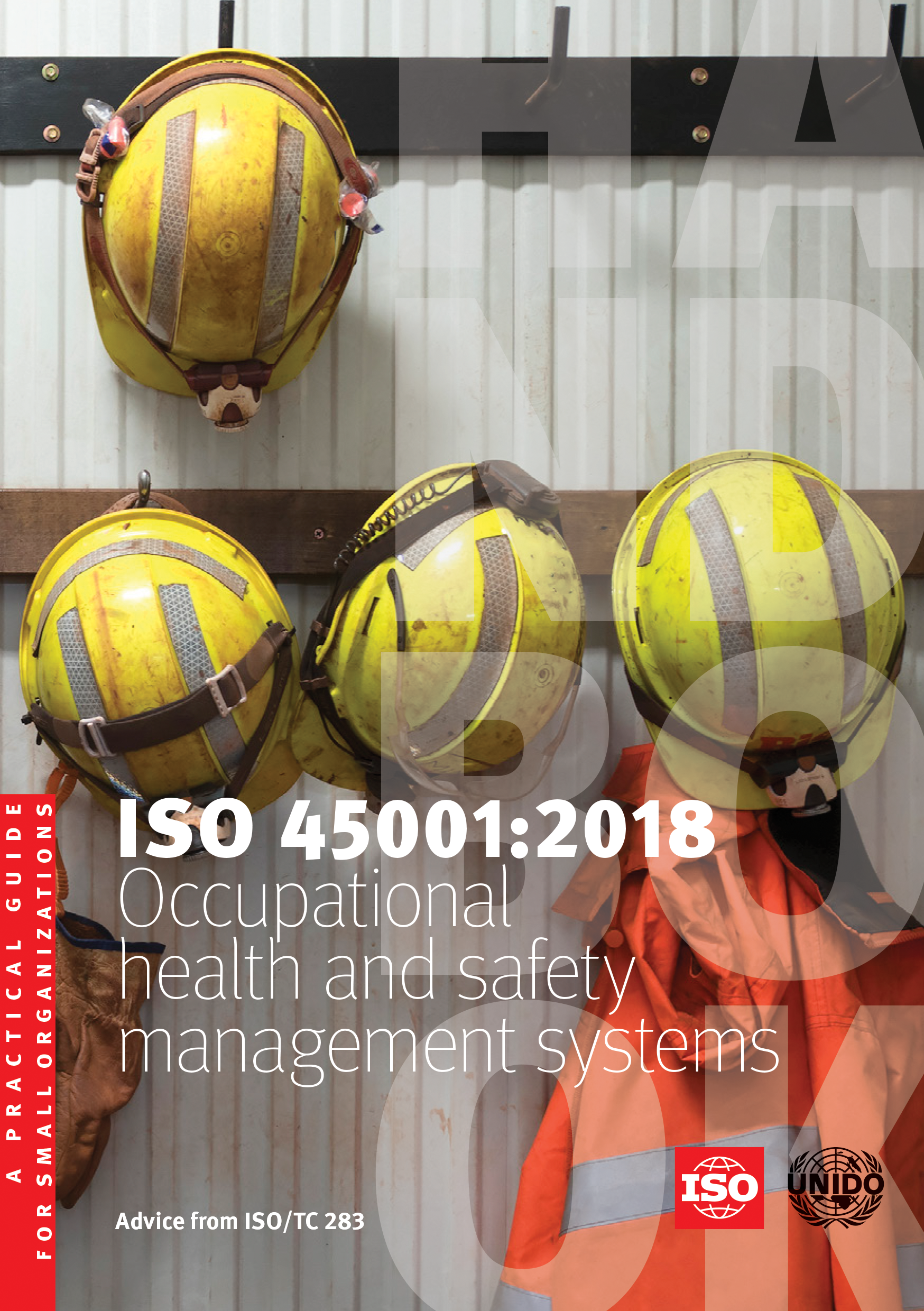Handbook helps small organizations implement ISO 45001

|
The International Organization for Standardization and the United Nations Industrial Development Organization have published a new handbook providing additional guidance specifically for small organizations regarding the implementation of ISO 45001, “Occupational Health and Safety Management Systems—Requirements with Guidance for Use.”
ISO 45001 is a result of agreed good practice from throughout the world. About 2.78 million people die from occupational-related accidents or diseases every year in addition to hundreds of millions of nonfatal accidents and health conditions. ISO 45001 aims to improve those statistics by providing a framework to reduce workplace risks, enhance health, increase safety and promote well-being at work.
Prepared by the group of experts who developed the standard, ISO 45001: 2018—Occupational Health and Safety Management Systems—A Practical Guide for Small Organizations gives an overview of the requirements of ISO 45001 and outlines ways in which small organizations can establish an occupational health and safety management system, taking into account their particular challenges and needs.
The benefits of such a system include reduced risk of work-related illness and injury; greater protection for people who work with or for the organization; a more positive company culture; and an improved reputation among clients, suppliers and the community.
The handbook is available for purchase at iso.org/publication/PUB100451.html.
Bill requires employee COVID-19 exposure notification

|
On Aug. 30, the California State Legislature passed Assembly Bill 685 that would require public agencies to notify employees if they’ve potentially been exposed to COVID-19 at work, according to the California Special Districts Association. The California Special Districts Association and other organizations representing employers have expressed concern provisions of the bill would create unnecessary challenges for employers.
AB 685 contains provisions establishing actions an employer must take if it receives notice of an employee’s potential exposure to COVID-19. Within one business day of receiving notice, an employer must:
- Provide a written notice to all employees and the employers of subcontracted employees who were at the same work site as an infected individual
- Provide all employees who may have been exposed with information regarding COVID-19-related benefits to which employees may be entitled under applicable federal, state or local laws
- Notify all employees and the employers of subcontracted employees regarding a disinfection and safety plan the employer will implement and complete per the guidelines of the Centers for Disease Control and Prevention
An employer must take these actions in the case of an employee’s laboratory-confirmed case of COVID-19, positive COVID-19 diagnosis from a licensed health care provider, COVID-19-related order to isolate provided by a public health official or death as a result of COVID-19.
If three or more employees get sick with COVID-19, an employer must begin reporting those illnesses to its local health authority who will in turn report the cases to the California Department of Public Health. In addition, an employer must retain records of the written notifications required for a period of at least three years.
The bill exempts all health facilities and employees who conduct COVID-19 testing or screening or provide treatment to individuals who are known to have tested positive for COVID-19, are under investigation or are in quarantine related to COVID-19 unless the qualifying individual is an employee at the same work site.
California Gov. Gavin Newsom signed AB 685 into law Sept. 17. The legislation will take effect Jan. 1, 2021.
Employers are skipping COVID-19 liability waivers
Nearly 75% of employers responding to a recent survey from law firm Blank Rome said they were not pursuing COVID-19 employee liability waivers, according to hrdive.com.
Only 8% of respondents said they require workers to sign liability waivers before entering the workplace, and fewer said they require clients or visitors to sign waivers.
“The enforceability of these types of waivers is likely to be fact-specific and state-specific, but under established law, most courts will not enforce waivers that violate public policy and will consider the parties’ respective bargaining power,” according to the report.
Employers and business groups have been urging Congress to pass legislation protecting them from certain COVID-19-related lawsuits.
The U.S. Chamber of Commerce and others sent a letter to lawmakers seeking such protections for employers, schools and others. In a July 31 statement, Chamber of Commerce Executive Vice President and Chief Policy Officer Neil Bradley said it would be “an enormous mistake” to exclude temporary liability protections from a future COVID-19 relief package.
“The entire business community, universities and colleges, and local school boards across the country are all united in support for a liability safe harbor for those who adhere to public health guidelines,” Bradley said in the statement. “Inclusion of a safe harbor is critical to reopening schools and restoring our economy.”
However, until such a protection is implemented, some employers are considering or using liability waivers. In a blog post, attorneys at law firm Fisher Phillips said such requirements bring up the question of enforceability; could discourage employees from returning to work; and may lead to negative reactions and publicity concerns.
New York City mayor announces new project labor agreements

|
On Aug. 13, New York City Mayor Bill de Blasio announced his administration has entered into new project labor agreements with the city’s building trade unions and has proposed state legislation to require contractors working in the city to hire low-income New Yorkers and those from areas with high poverty levels, according to constructiondive.com.
The project labor agreements with the Building and Construction Trades Council of Greater New York contain new terms for renovation work on city-owned buildings and will serve as a template for other city agencies to use. The city also has introduced a new project labor agreement that will cover new construction for select future projects. Both reportedly are intended to create consistency in project work rules; reduce the administrative load on the agencies responsible for construction; and give easier access to pre-apprenticeship and apprenticeship programs.
As part of the community hiring program, a new Office of Community Hiring and Workforce Development will expand access to construction jobs for individuals in economically disadvantaged communities and authorize other city agencies to do the same.
As part of the new project labor agreement, unions will prioritize referrals from ZIP codes where 15% or more of the population lives below the federal poverty level or are New York City Housing Authority residents, with the goal of using workers from these neighborhoods for 30% of total project labor agreement hours worked.
De Blasio also announced New York City is on track to award 30% of all city contracts to minority- and women-owned businesses by 2021 and $25 billion worth of work across all industries by 2025. The mayor’s office says the city now has 10,000 certified minority- and women-owned businesses, a 173.4% increase since de Blasio took office.
If approved by state lawmakers, the proposals reportedly would create about 1,300 construction jobs for individuals in low-income communities for every $1 billion in construction. The city also projects the initiatives would lead to about $1 billion in wages and benefits for the targeted communities during the program’s first year.
Although the mayor’s announcement included praise from community and building trades leaders, some construction employer groups say project labor agreements inhibit fair and open competition, particularly when nonunion contractors are required to adhere to agreement terms to take part in a project. Those supporting project labor agreements say they are the best way to ensure workers receive fair wages and benefits while also providing contractors with skilled labor.



